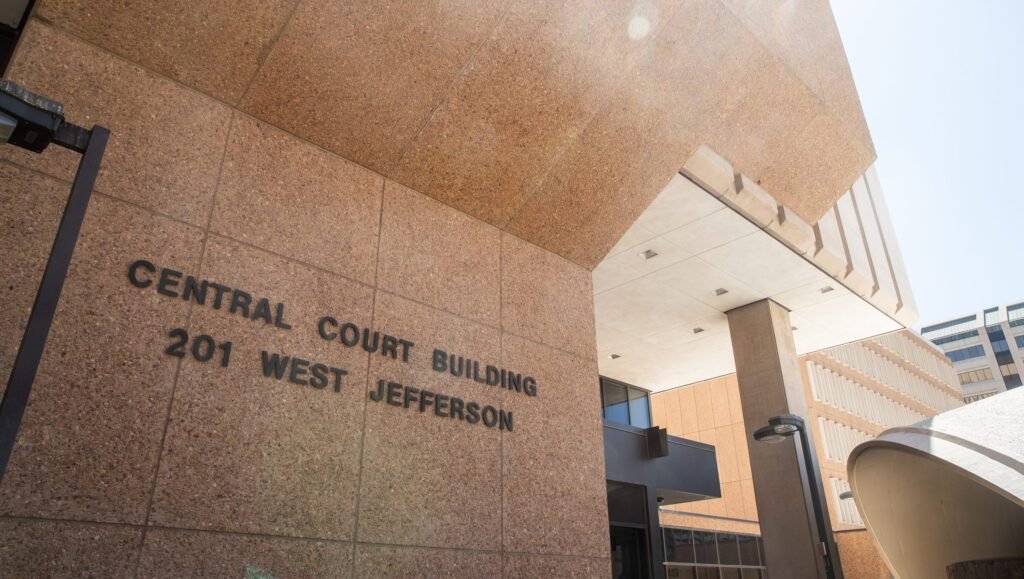All Maricopa County Superior Court judges, all Court of Appeals judges, and Arizona Supreme Court Justices Clint Bolick and Kathryn King scheduled to remain on the Nov. 5 vote will keep their seats as vote counting continues. It seemed to be. .
In Arizona, trial court judges, appellate court judges, and Supreme Court judges in Maricopa, Pima, Pinal, and Coconino counties are appointed by the governor. All appointed judges serve for two years before facing a retention election. Thereafter, appellate court judges, including Supreme Court justices, will face retention elections every six years, and trial court judges will face retention elections every four years.
The Arizona Judicial Performance Review Board evaluates appointed judges by administering surveys to witnesses, jurors, court staff, and others who observe the judge’s work. This year, a majority of committee members determined that all 69 judges who were eligible for retention in a Nov. 5 statewide vote met performance standards for the bench.
The committee’s report is available for viewing on the website. Voters can learn when judges were appointed, read judicial performance reports, and in the case of some judges, see short biographies.
The commission’s website also includes links to pending decisions of appellate court judges and Supreme Court judges.
2024 Election: View Arizona election results
Civic Engagement Beyond Voting, a group formed after the 2016 election, sought to provide voters with more information about the judges on their ballots than the commission made public.
Kathy Sigmon, the group’s founder, said she created the group to provide information about legislative elections. “” was added in 2020.gavel clock“Voting Guide for Judicial Retention Elections.
Sigmon said he appreciated the information the commission provided about judges, but felt it was lacking.
“We found that people really appreciated having a source of information they could access if they didn’t want to get buried in a JPR spreadsheet,” Sigmon said. “We explain the justices’ opinions and focus on the potential bias they may bring to the bench.”
Her group is affiliated with the national progressive nonprofit group Indivisible, and said it is nonpartisan but not neutral.
“One of my concerns about the Judicial Performance Review Commission’s report is that much of it relies on just a few survey responses for each judge,” Sigmon said. “I feel like that’s very inadequate.”
Sigmon said she and a team of volunteers supplement the commission’s report with publicly available information and relevant news coverage.
Proposition 137: Voters reject judicial retention changes
Arizona voters overwhelmingly rejected Proposition 137.
The bill, which has been referred to a vote in Congress, would abolish automatic judicial retention elections.
If the bill passes, judges could only be removed through the existing removal and recall procedures set out in the Arizona Constitution, or if the judge takes action that would trigger a retention election. There was.
The measure is retroactive and would nullify the results of the judicial retention vote on the Nov. 5 ballot.
Two Peace and Justice elections were contested in Maricopa County.
Arizona’s judicial courts are created based on population; 26th in Maricopa County. Each courtroom has one magistrate and one constable. Justice courts handle misdemeanors, protective orders, evictions, traffic violations, and small-value civil cases.
Magistrates serve four-year terms and earn an annual salary of about $100,000. Candidates do not need to be lawyers or have any special education. All races were uncontested in the general election except those in Moon Valley and North Mesa Judicial Districts.
In the North Mesa district, Republican incumbent Kyle Jones held a comfortable lead over Democrat Kiana Sears in the first round of voting Tuesday night.
In Moon Valley, Democrat Mireya Arroyo had a wide lead over Republican Michael Irish.
This article will be updated as election results are reported.
















